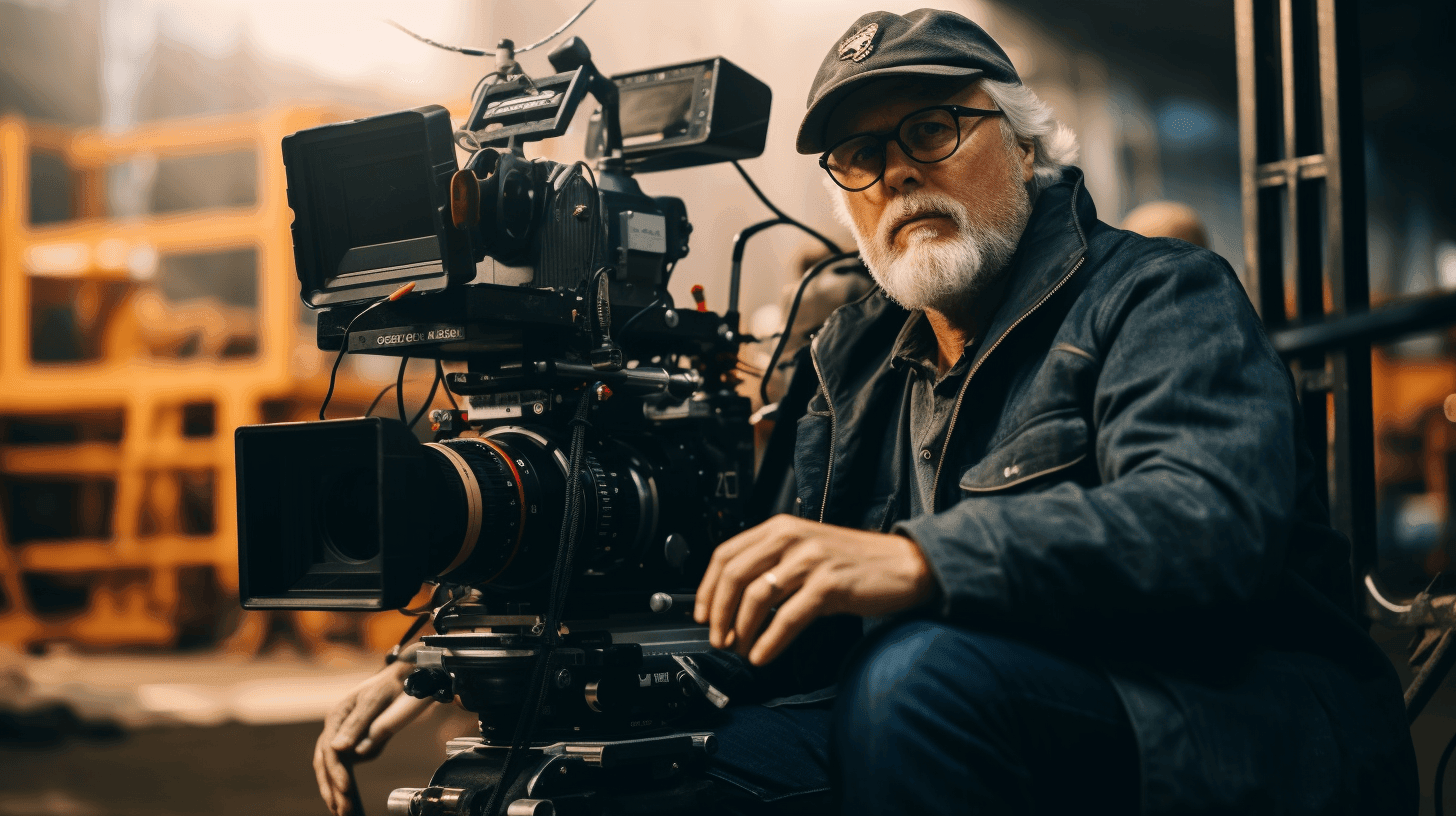Film Director: Challenges, Influence, and the Journey to the Top
The allure of the director's chair is often shrouded in a sense of intrigue. As central figures in the birth of cinematic masterpieces, directors embody a role that is complex, multifaceted, and profoundly impactful.


This article aims to demystify the role of film director, emphasizing their significant influence over the cinematic creation process and discussing the multiple stages of film production.
The Fascination of Becoming a Film Director
Stepping into the realm of film directing is akin to boarding a creative flight of fantasy. The director’s role blends the qualities of a dreamer, an artist, a leader, a problem-solver, and a persistent visionary.
As a director, you weave magic with a canvas as broad and as colorful as your imagination. There's a magnetic pull in morphing the dream-like wisps of your thoughts into palpable realities on the silver screen. You birth new worlds, sculpt characters, conduct emotions, and narrate tales that have the potential to motivate, uplift, and even alter audiences.
Consider yourself the captain of a vessel voyaging through the seas of human experience. You are not merely narrating a tale; you're molding perceptions, delving into depths of empathy, and beckoning audiences to journey with you through unexplored emotional terrains. Every film is an expedition, every scene is a revelation!
Directing also offers the rewarding challenge of uniting a constellation of talents. Whether it’s actors, cinematographers, scriptwriters, or costume designers, you serve as the vital core of a vibrant network of creativity. To witness your vision mirrored in the work of countless others and harmonize their expertise towards a unified goal is a satisfaction that is truly unparalleled.
Furthermore, the directorial journey lets you etch your indelible mark on the annals of cinema. Directors like Christopher Nolan, Ridley Scott, and Sofia Coppola have not only earned plaudits for their esteemed films, but they've also carved their unique directorial signatures on the celluloid landscape.

There's an undeniable appeal in joining these ranks of influence, expressing your worldview, and contributing to the evolving narrative of cinematic artistry. Your films could initiate conversations, fuel passions, question norms, and even etch milestones in film history.
Finally, being a film director enables you to experience a plethora of lives. With every film, you plunge into fresh realms, fresh perspectives, and fresh epochs. One day you might be orchestrating a zero-gravity ballet for a sci-fi epic, the next you could be recreating the Elizabethan era for a historical drama. The world becomes your storyboard, and life transforms into an endless fountain of inspiration.
In sum, the director's role is not merely a profession; it's a lifelong dance with storytelling, a jubilee of creativity, and an adventure that's as thrilling as it is fulfilling. With platforms like Filmustage providing innovative directing tools, the director's journey is made even more exhilarating, enabling you to mold your vision with precision and elegance.
Bring Your Directorial Vision to Life with Filmustage!
Focus on storytelling while AI handles the logistics, making your creative process smoother and more efficient!
So, adorn the director's hat, position yourself behind the camera, and let the enchantment of filmmaking sweep you off your feet. After all, there's nothing quite as cool as witnessing the cosmos of your imagination spring to life on screen!
Deconstructing the Film Director's Role
Let's start with a fundamental question: What does a film director do? Essentially, a film director is the linchpin of a film, orchestrating every facet from the script to the screen. The directorial role requires a profound interpretation of the script, morphing text on paper into compelling visuals.

Drawing from the annals of film history, we recall auteurs like Stanley Kubrick and Alfred Hitchcock, who stamped their distinctive directorial styles onto their works. They exemplify the quintessence of directorial responsibilities - the transformation of a script into a unique cinematic vision.

Key Duties in Film Production
The responsibilities of a film director permeate the three crucial stages of film production: pre-production, production, and post-production. During the planning phase of pre-production, directors play a critical role in casting decisions, location scouting, and script interpretation. They collaborate closely with other departments to ensure a coherent vision for the film.
The production phase, also known as principal photography, is when the director’s vision manifests. On-set direction involves guiding the performances of actors and supervising the visual elements of a scene. Esteemed director Steven Spielberg, known for his meticulousness, often storyboards his entire film, assuring every shot aligns with his vision.

The post-production supervision includes collaborating with editors, sound designers, and visual effects teams to refine the film. This phase brings to mind George Lucas, whose post-production efforts on Star Wars revolutionized the realm of visual effects.

Directorial Techniques and Styles
Directors employ an array of directing techniques to achieve their desired outcomes. Whether it's the extended take in Martin Scorsese’s "Goodfellas" or the wide-angle shots in Wes Anderson’s "The Grand Budapest Hotel", these techniques become integral facets of their directorial styles.

A director's influence over a film is profound, shaping its narrative, visual style, and overall impact. A director's stylistic choices have the potential to propel a film into cinematic immortality. For instance, think of Stanley Kubrick's symmetrical framing, extravagant Steadicam shots, or Quentin Tarantino's quirky dialogues and non-linear narratives. Each choice contributes to the overall fabric of their films, establishing a unique signature that audiences can immediately recognize.

Challenges Faced by Film Directors
Despite its glamour and rewards, the journey to becoming a successful film director is often strewn with challenges. It’s not just about being a creative powerhouse, but also mastering the art of managing a crew, maintaining budgets, and navigating production constraints. Directors have to be excellent problem-solvers, often working under tight schedules and fluctuating weather conditions, as well as overcoming unexpected issues that may arise on set.

Also, the journey to the director's chair is usually long and arduous. It requires passion, persistence, and an indomitable spirit to weather the ups and downs of the industry. For many, it involves years of experience in various roles within the industry, gradually working their way up, gaining invaluable expertise and knowledge at each step.
Furthermore, even after reaching the director's chair, the responsibility of fulfilling the expectations of the audience, the producers, and the critics can be quite daunting. Your artistic vision must align with the market expectations to secure the financial success of the film, and this balance can be quite challenging to achieve.
The Director's Influence on Cinema
The influence of a director on a film is so significant that they can dramatically alter the final outcome and in turn, the course of cinema itself. Directors are the prime architects of cinematic language, innovating new techniques, creating distinct styles, and exploring uncharted territories in storytelling.
Through their creative decisions, directors can significantly influence the cultural fabric of society, creating films that reflect or challenge societal norms, sparking conversations, and even inspiring social change. Directors like Spike Lee, Ava DuVernay, and Kathryn Bigelow have been lauded for their incisive explorations of social issues in their films, influencing public discourse and pushing the boundaries of conventional cinema.

Conclusion: The Journey to the Top
Embracing the role of a film director is no less than embarking on an epic odyssey. It is an exciting, challenging, and fulfilling journey, shaping the worlds within our screens and leaving an indelible impact on audiences worldwide. With pre-production platforms like Filmustage offering innovative tools for directors such as automatic script breakdown, the cinematic voyage is becoming increasingly dynamic, allowing directors to translate their visions into reality more effectively.
Ultimately, the director's chair is not just a professional role; it's a testament to a relentless pursuit of storytelling, a canvas for artistic expression, and a beacon guiding the voyage of cinema into uncharted territories. It is indeed a role of immense influence, challenging yet rewarding, an emblem of creativity, leadership, and innovation in the dazzling world of filmmaking.
From Breakdown to Budget in Clicks
Save time, cut costs, and let Filmustage’s AI handle the heavy lifting — all in a single day.